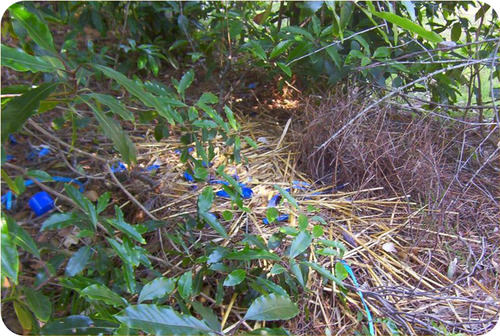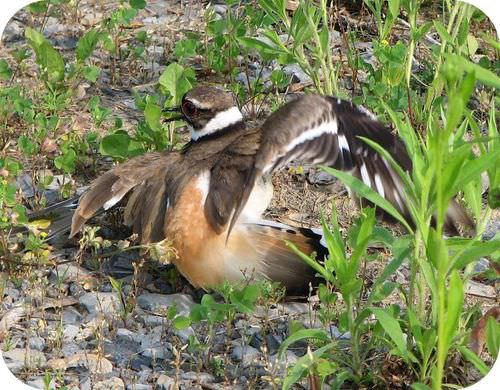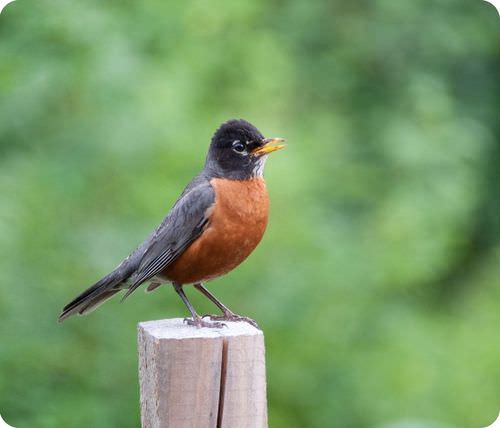READ: Adaptations for Reproduction
READ: Adaptations for Reproduction
So when does the peacock extend his tail?
Peafowl are best known for the male's extravagant tail. Obviously though, a peacock cannot have his tail extended continuously. It would make it very difficult to move around. And it may be very tiring. So when does the peacock extend his tail? The peacock displays his tail as part of courtship.
Mating and Courtship
Mating refers to the pairing of a male and female of the same species for reproduction. The relationship between mates varies by species. Adults may have many mates, or they may mate with just one individual. Mates may stay together only while mating, for an entire breeding season, or even for life.
Some of the most important animal adaptations involve mating. Adults that are most successful at attracting a mate are most likely to have offspring. Traits that help animals attract a mate and have offspring increase their ability to survive. As the genes that encode these traits are passed to the next generation, the traits will become more common in the population.
Females are likely to be more selective than males in choosing mates. In many species, males put on courtship displays to encourage females to choose them as mates. For example, to attract a mate, a male bowerbird builds an elaborate nest decorated with hundreds of small blue objects (see figure below).
Bowerbird Decorating His Nest. A male bowerbird spends many hours collecting bits of blue glass and other small blue objects to decorate his nest. A female bowerbird inspects the nests of many males before choosing as a mate the male with the best nest.
Different species have different courtship behaviors. One example is a peacock raising his tail feathers. The colorful peacock is trying to impress females of his species with his beautiful feathers. Another example of courtship behavior in birds is the blue-footed booby. He is doing a dance to attract a female for mating. During the dance, he spreads out his wings and stamps his feet on the ground.
Courtship behaviors occur in many other species. For example, males in some species of whales have special mating songs to attract females as mates. Frogs croak for the same reason. Male deer clash antlers to court females. Male jumping spiders jump from side to side to attract mates.
Parental Care
In most species of fish, amphibians, and reptiles, parents provide no care to their offspring. In birds and mammals, on the other hand, parental care is common. Most often, the mother provides the care. However, in some species, both parents or just the father may be involved.
Parental care is generally longest and most involved in mammals. Besides feeding and protecting their offspring, parents may teach their offspring skills they will need to survive on their own. For example, meerkat adults teach their pups how to eat scorpions. They show the pups how to safely handle the poisonous insects and how to remove the stingers.
This mother killdeer is pretending she has a broken wing. She is trying to attract a predator’s attention in order to protect her chicks. This behavior puts her at risk of harm. How can it increase her fitness?
Defending Territory
Some species of animals are territorial. This means that they defend their area. The area they defend usually contains their nest and enough food for themselves and their offspring. A species is more likely to be territorial if there is not very much food in their area. Animals generally do not defend their territory by fighting. Instead, they are more likely to use display behavior. The behavior tells other animals to stay away. It gets the message across without the need for fighting. Display behavior is generally safer and uses less energy than fighting. Male gorillas use display behavior to defend their territory. They pound on their chests and thump the ground with their hands to warn other male gorillas to keep away from their area. The robin displays his red breast to warn other robins to stay away (figure below).
The red breast of this male robin is easy to see. The robin displays his bright red chest to defend his territory. It warns other robins to keep out of his area.
Some animals deposit chemicals to mark the boundary of their territory. This is why dogs urinate on fire hydrants and other objects. Cats may also mark their territory by depositing chemicals. They have scent glands in their face. They deposit chemicals by rubbing their face against objects.
Plant Reproductive Adaptations

Some flowers have very strong scents. Others have sweet nectar. These traits attract animals. The animals they attract may include insects, birds, mammals, and even reptiles. Why do you think it is important for the plants to attract animals? Animals are able to transfer pollen from one plant to another and carry seeds from one place to another. While visiting a flower, an animal picks up pollen. The animal then travels to another flower and transfers the pollen to fertilize the egg resulting in offspring.
Some plants utilize their fruit to attract animals to transport the seeds they create to another location. When a horse eats an apple, it does not digest the apple seeds. As the horse travels and eliminates waste, the seeds are dispersed over a large area.
Other plants developed additional traits that aid in reproduction through seed dispersal.
Dandelion seeds have tiny “parachutes.” Maple seeds have “wings” that act like little gliders. Burdock seeds are covered with tiny hooks that cling to animal fur.
Some plants rely on seeds getting stuck in animal fur. Once stuck, the seeds are carried off to another location. Eventually, the seeds fall off and grow into a new plant.
Other plants developed traits to better disperse their seeds using the wind. With time, plants develop better and better traits to help them reproduce.
Summary
- Behaviors relating to reproduction include mating, courtship, and parenting behaviors.
- Mating refers to the pairing of a male and female of the same species for reproduction.
- In many species, males put on courtship displays to encourage females to choose them as mates.
- Parental care varies greatly from one species of animal to another.
- Many invertebrates provide almost no care, whereas mammals usually provide the most parental care.
- Animal parental care can be provided by the female or the male.
- Some species of animals are territorial. This means that they defend their area.
- Plants have developed flowers and different types of seeds to help them reproduce.






